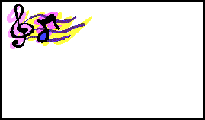Chord Mixing (part 2)
May 11th, 2008 by admin
If you remember “the 3 minor chords”, and how we play them by substituting them with the 3 basic chords, and simply combining each of these 3 basic chords with a different bass note, then the summary is as below:
Chord VI m = Chord I (right hand) + Bass 6 (left hand), i.e., the “la” note
Chord II m = Chord IV (right hand) + Bass 2 (left hand)
Chord III m = Chord V (right hand) + Bass 3 (left hand)
To recap the chord mixing from part 1, see the summary below:
Chord I + Chord V
Chord IV + Chord I
Chord V + Chord IV
Now, since the 3 minor chords are made up of the 3 basic chords, we can actually mix them with the same chords as above too. I.e.,
Chord VI m + Chord V
i.e., Chord VIm can be mixed with Chord V. Afterall, to start with, we actually play Chord I on the right hand with a different bass note (the 6th note, i.e., “la”) to implement Chord VIm. In the key of C, that means the Am chord can be mixed with a G chord.
Similarly,
Chord II m + Chord I
i.e., Chord IIm can be mixed with Chord I. Afterall, to start with, we actually play Chord IV on the right hand with a different bass note (the 2nd note, i.e., “re”) to implement Chord IIm. In the key of C, that means a Dm chord can be mixed with a C chord.
However, here is the exception. We can’t exactly mix Chord IIIm with Chord IV. You can try. I have tried it, but I don’t like the resulting sound. ![]() That means, in the key of C, I usually do NOT mix Em with an F chord.
That means, in the key of C, I usually do NOT mix Em with an F chord.
I will show an example of chord mixing as soon as I can with the song “How Great Is Our God” by Chris Tomlin using a video.





[...] is a good example to illustrate our Chord Mixing trick (See “Chord Mixing (part 1)” and “Chord Mixing (part 2)” [...]